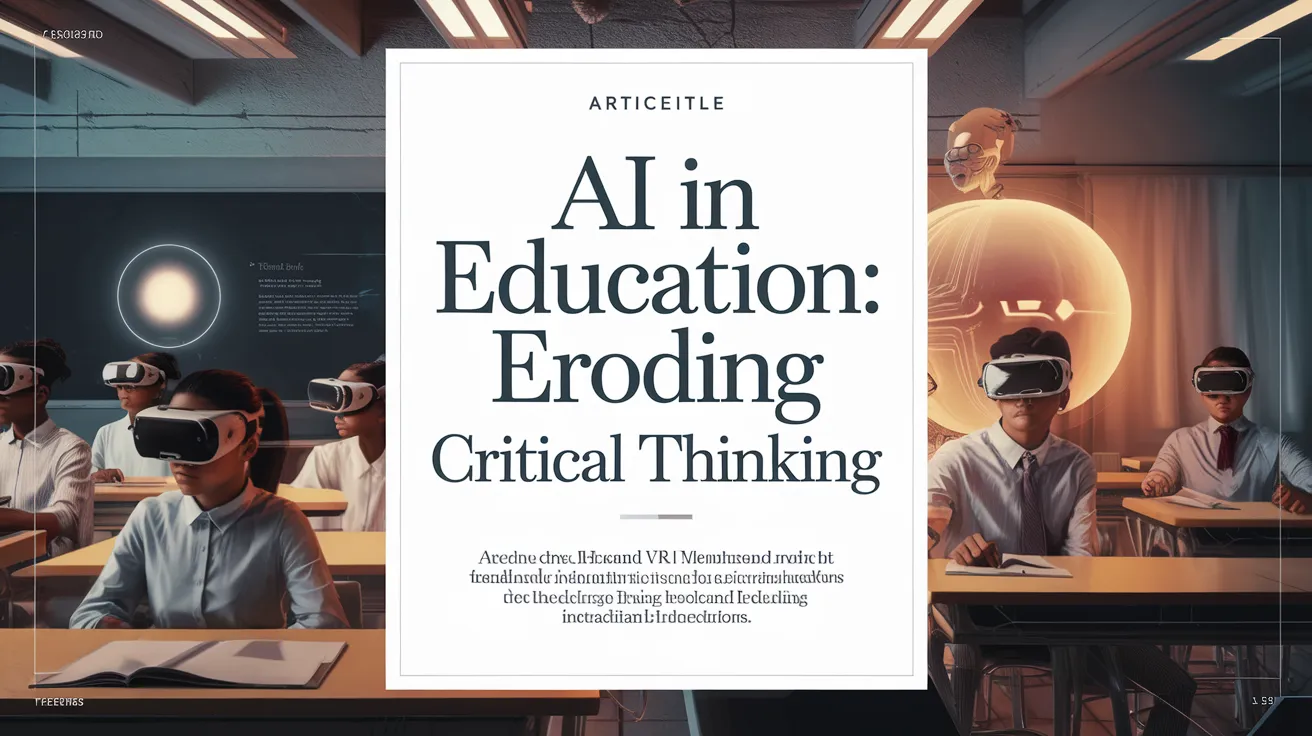AI in Education: Eroding Critical Thinking

AI has transformed the educational experience for many students, and for Ashanty Rosario, a senior at a public high school in New York, this change is deeply concerning. Despite choosing not to use AI tools like ChatGPT in her own studies, she finds these technologies permeating every aspect of her academic life, often in ways that diminish critical engagement and learning.
Students Relying on AI Tools
During a lesson on the “Narrative of the Life of Frederick Douglass,” Ashanty observed a classmate seamlessly extracting text from the chapter and entering it into ChatGPT. The AI then generated an annotation that would be used as part of the class discussion submission. What should have been a reflective dialogue on significant historical themes instead became an exercise in simply copying and pasting AI-generated commentary. Similarly, in her Algebra II class, she witnessed a peer using ChatGPT to generate step-by-step solutions, effectively undermining the educational process.
The Impact on Student Engagement
This normalization of AI shortcuts has altered the academic landscape. Deadlines lack urgency, and the frantic productivity that accompanied late-night study sessions has diminished as students turn to AI to alleviate the pressure. The shared experience of meeting those deadlines has been lost, and many students feel less compelled to engage deeply with their assignments. Consequently, lessons in discipline and time management are being overlooked, as chatbots make it all too easy to bypass the hard work.
Schools Responding to the Challenge
In response to these challenges, schools across the U.S. are investing in detection tools and monitoring software to combat cheating. While efforts—including plagiarism checkers and proctoring software—have been implemented, Ashanty notes that these measures are often ineffective. Students are finding ways around them by using AI “humanizer” tools or simply bringing in concealed devices for exams.
The Shift in Learning Priorities
Beyond the immediate concerns over cheating, AI’s rise has shifted focus from genuine learning to prioritizing grades. The prevailing attitude becomes one of outsourcing intellectual effort, rather than investing in personal growth and understanding. Ashanty highlights her experience on the debate team, originally a space for developing critical thought and argumentation skills, where AI now poses a threat by diluting the substance of competition.
Potential for Positive Use of AI
It is important to acknowledge that AI can also serve beneficial purposes. Some students utilize these technologies to deepen their understanding and explore subjects of interest. For example, AI can assist in quizzing for tests and reinforcing knowledge. Nonetheless, there remains a looming concern about the reliance on such tools, especially if they become the only methods students know for problem-solving and intellectual engagement.
Innovative Assessment Strategies
To restore integrity and foster original thought in education, new assessment methods are called for. Deploying oral exams where students articulate their thought processes, personalized writing assignments, and portfolio assessments could inspire creativity and honesty. Encouraging students to reflect on their work through learning journals may also enhance genuine engagement and learning.
It is clear that if AI simplifies academic tasks, it simultaneously makes the journey toward self-sufficiency more challenging. Ashanty concludes that without intervention, we risk producing a generation ill-equipped to think independently or handle real-world challenges.